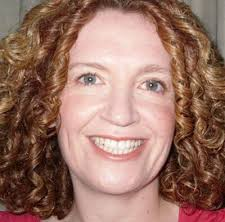Perhaps it is one of the side effects of the SARS-CoV-2 pandemic, and the continued desire to get out and about more, but it seems to me that people are enjoying sport more than ever now. The recreation grounds near me are full every weekend with football and rugby training and matches, and the cricket nets on the green are almost permanently in use now. I regularly see people of all ages running and cycling on the local shared use pathways and school sport seems to be enjoying a revival, with inter-school matches and local leagues seeing lots of action. This is all so good to see.
All of that said, how inclusive are we in schools when it comes to PE and games? Are the sporting options on offer genuinely open to all children? It goes without saying that not everyone will enjoy all sports, but are we offering the opportunity for all children to find out what they love?
Time for reflection
Simon Roadley, PE and Sports Development Lead at Dorothy Goodman School in Leicestershire, feels that there just might be work to be done when it comes to inclusion and school sport. He explained, “I feel that the main barrier to inclusion in many settings is the question of ‘why are we teaching PE?’ If the focus is on creating sportspeople, then there is often a lack of an inclusive approach. However, schools that look beyond the sport and take a holistic approach to PE tend to be much more inclusive for their students.”
In order for schools to become more inclusive when it comes to sport and PE, it is important for schools to look at their own context and work out what provision will best suit them. Without this any change is meaningless. “Schools often look to something that comes ‘off the shelf’ and in my opinion, this will never work without meaningful reflection on the context and how this affects their provision,” said Roadley. “For some, this will be a curriculum offering lots of opportunities for competition and for others it will take more of a wellbeing approach, however for most it will take more of a blended approach or even personalised.”
The method that Roadley took was to mould their SEND curriculum with ideas from various models and approaches, including a concept-style curriculum. “With this,” he explained, “the concept comes first and is the driver behind the learning, with the sports/activities that we use only highlighted as a vehicle for the learning, which allows us to offer different activities for our various groups of young people. We also stream PE groups by ability and personality of the young people, for example in KS4 we have a PMLD group, an engagement-focused group, an enjoyment/games-focused group and a competitive group. The different groups allow us to deliver an experience that will be engaging and meaningful for the young people.”
One observation that Roadley made was that there is often very little knowledge in mainstream PE departments, in how to best support learners with SEND. He said: “I often support colleagues in schools and have been really surprised over the past few years with how little support there is available for mainstream PE teachers to support their learners. There is usually very limited support from their SENDCo, which for me, seems to be the best solution going forwards but is often hindered by the huge caseloads that they have and the priority put on core-subjects. This often means that support that I offer is usually the most basic bites of advice, to make their PE offer that little bit more inclusive.”
These sentiments are echoed by Glyn Davies, SEND Inclusion Lead at The PE and School Sports Network. He explained, “I usually work on the aesthetics of PE, what it looks like and what it feels like, supporting students with activities like movement, throwing, catching, passing, etc so they get help with the action so they start to perform it independently.”
Davies suggests that starting with activities sitting or floor based helps with skill attainment. He said: “I always use visual aids also like throw down spots so students know where to be. Using balls that are slightly deflated so they are easier to manipulate. Also, the use of different size balls is a big help. I like to focus on listening, thinking, and looking skills as well as focus in PE as this helps students with their social skills.”
Knowing your children, their skills, aptitudes, and abilities is absolutely key to making PE more inclusive. In particular, PE for children with SEND needs to be adaptive in order to be inclusive.
Overcoming hurdles
Engagement in PE can be particularly challenging for some children with SEND. Not only can changing into PE kit cause difficulty and, at times, distress, but the skills involved in PE lessons can be demanding – throwing and catching, processing, gross motor skills and so on. Some may love PE, some may not see why it should feature in the curriculum, and the competitive nature of the subject may seem unfair.
Faith Newton, author of 'Inclusive PE for SEND Children: A Practical Guide for Teachers', points out the need to introduce students to a wide variety of physical activities so they can find one that they enjoy and that plays to their strengths. “Many SEND children prefer individual activities over competitive team sports as this reduces the cognitive, communication and social demands and enables them to develop their skills at their own pace without the fear of 'letting others down',” she explained.
In order to put the spotlight on inclusion in PE in your school, these points may help:
- Why do we play sport? Or most importantly, why do children play sport? To be with their friends? To win? To keep fit? To learn skills?
- Think about the role that competitive sport plays in your school. Balance competition with personal bests and collaborative cooperative games.
- Consider using groups to further access, enjoyment and attainment in PE as suggested by Simon Roadley.
- What visual aids can you use to make the learning more accessible? Do all children have to do the same activities in order to teach the same skills?
- Variety is everything! The more children are exposed to in terms of the full range of sports they can do, the better.
Children can learn so much from sport; not only from achieving and losing in competitive scenarios but also in terms of physical development, cognitive development, wellbeing, self-worth and self-esteem. They can make friends for life, support one another, learn about difference and diversity, and really understand what it feels like to achieve a personal best. If there is anything at all that we could be doing to make PE more accessible to all, now would be a great time to do it.
About the author
Elizabeth Holmes
After graduating with a degree in Politics and International Relations from the University of Reading, Elizabeth Holmes completed her PGCE at the Institute of Education, University of London. She then taught humanities and social sciences in schools in London, Oxfordshire and West Sussex, where she ran the history department in a challenging comprehensive. Elizabeth specialises in education but also writes on many other issues and themes. As well as her regular blogs for Eteach and FEjobs, her books have been published by a variety of publishers and translated around the world. Elizabeth has also taught on education courses in HE and presented at national and international conferences.












